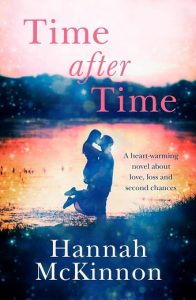Nonlinear Narratives – Tips & Tricks
 Have you ever finished a chapter in one character’s point of view only to find the next chapter is written from somebody else’s perspective? Me too, and these mini cliff-hangers compel us to keep reading. Nonlinear narratives – stories where events don’t happen in chronological order – do this too. They are extremely useful for tension and pacing in a novel, but can be confusing to read and are notoriously difficult to write.
Have you ever finished a chapter in one character’s point of view only to find the next chapter is written from somebody else’s perspective? Me too, and these mini cliff-hangers compel us to keep reading. Nonlinear narratives – stories where events don’t happen in chronological order – do this too. They are extremely useful for tension and pacing in a novel, but can be confusing to read and are notoriously difficult to write.
Movies such as Pulp Fiction, Reservoir Dogs and The Usual Suspects have nonlinear structures, as did the rom-com Sliding Doors. One could argue a movie is easier to follow. After all, visual cues can more readily demonstrate the subtle time shifts a reader might otherwise miss in a book.
Attempting a nonlinear narrative for my first novel was, in hindsight, ambitious. Then again, I’d read many stories with that structure; for example Josie Lloyd & Emlyn Rees’ The Boy Next Door or, more recently, Jojo Moyes’ The Girl You Left Behind and Lisa Jewell’s The House We Grew Up In.
I was used to the concept of being shifted back and forth in time, and always enjoyed the suspense this created – unravelling the past and the present a little at a time and in alternating chapters was always a source of excitement for me.
When I began writing Time After Time I didn’t think of it as a ‘nonlinear narrative’. As far as I was concerned, it was a novel with a simple enough premise. Forty-something Hayley is unhappy with her life and wonders about the choices she made in the past. One morning she wakes up to find herself married to her first boyfriend, Chris, whom she hasn’t seen for twenty years.
At this point the nonlinear narrative kicks in – the story goes back to the late eighties when Hayley first met Chris, and explores how their relationship started and ultimately fell apart. Back in the alternate present Hayley learns how her life would be had she and Chris stayed together.
Right from the beginning I knew exactly how I wanted to portray my protagonist’s journey. Showing Hayley’s past and present in alternate chapters also enabled me to fully develop her character and those of her ex-boyfriends. In fact, if the novel were written in a linear narrative, the story wouldn’t make much sense.
Not all novels work with a nonlinear structure. If you think yours will, and are unsure of how to go about writing it, here are some suggestions to help make sense of it all:
- Write your idea as a short story first
A 2,000 word story is much easier to lay out in a non-chronological order than an 80,000 word novel. Start small, see how it works, and take it from there.
- Use one point of view
If you can, stick to your main protagonist’s point of view. Writing a nonlinear story from one person’s perspective will be simpler than attempting to interweave chapters with different timelines and alternate POV’s.
- Write the chapters in chronological order
At the very least make a list of events in chronological order so that you fully understand the timeline. If it’s not clear to you, chances are it won’t be to your reader either.
- Interweave the chapters
Once you’ve written the chapters (or list of events) in chronological order, print and physically interweave the pages to work out the best possible flow.
- Ensure the past and present storylines continue in chronological order
Have fun taking your readers back in time but don’t time-hop all over the place or you’ll risk losing them. Confused? Fair enough. This is best illustrated with two examples:
| Example 1 | Example 2 | |||
| Chapter 1 | January 2017 | Chapter 1 | February 2017 | |
| Chapter 2 | April 1985 | Chapter 2 | May 1985 | |
| Chapter 3 | February 2017 | Chapter 3 | January 2017 | |
| Chapter 4 | May 1985 | Chapter 4 | April 1985 | |
In Example 1 there are two storylines; one in 2017 and the other in 1985. While the chapters are interwoven present/past, the story of 2017 follows in chronological order (January, February) as does the story set in 1985 (April, May).
In Example 2 the chapters shift from 2017 to 1985. However, they also jump backwards within each year (e.g. February to January of 2017, May to April of 1985). This is difficult to pull off because you’re “double-shifting” the reader.
- Make the time shifts abundantly clear
Use a chapter heading with “XX years ago” or “Present Day” or just the date. This will remind the reader which storyline they’re in.
- Ask your beta-readers for feedback
Enquire specifically how they felt about the timeline and the structure of the story. What, if anything, did they find confusing?
 Of course, these suggestions are made to be ignored. My second novel (working title The Secrets That Made Us) also has a nonlinear narrative. It was more complicated to write than Time After Time, which was purely from Hayley’s perspective (as per suggestion 2 above). The Secrets That Made Us has three points of view – definitely more challenging by far.
Of course, these suggestions are made to be ignored. My second novel (working title The Secrets That Made Us) also has a nonlinear narrative. It was more complicated to write than Time After Time, which was purely from Hayley’s perspective (as per suggestion 2 above). The Secrets That Made Us has three points of view – definitely more challenging by far.
I’m now working on my third novel which has a linear narrative, and I absolutely see the attraction of structuring a manuscript this way. So far it’s saved me lots of frustrated head scratching and under-my-breath muttering about the “ruddy timeline”. Then again the story wouldn’t lend itself to a nonlinear narrative, so there was little point in overcomplicating things for myself or a potential audience.
Whether you use a nonlinear narrative ultimately depends on your story. Start by asking yourself if it’ll lend itself to a more complicated timeline, if it’ll make the novel more compelling, and if it’s a journey you think you – and your readers – will enjoy.
Best of luck!
Hannah
—
Hannah was born in the UK and grew up in Switzerland. Unsurprisingly she loves chocolate, mountains and cheese, and books, of course.
When she moved to Canada with her husband and three sons in 2010 she went through an (early) mid-life crisis. Maybe it was the failed attempt at a start-up company or the fact she suddenly found herself in her forties, but one morning she decided to follow her oldest passion; she started writing and never wanted to look back. Hannah writes for adults and children, and has a soft spot for quirky short stories, many of which have been published online. Time After Time is her first novel. She lives in Oakville, Ontario.
To find out more please visit www.hannahmckinnonwriter.com or follow her on Twitter @mrselectrilight
Category: How To and Tips

























Excellent advice! I do love novels that hop back and forth, but adding in the date at the beginning of each chapter does help me as a reader to know where I am at. Many books seem to skip that. As an author, I too tend to write out the stories separately then weave them together, ensuring the mini-cliffhangers feed off of each other. It’s quite fun to do!